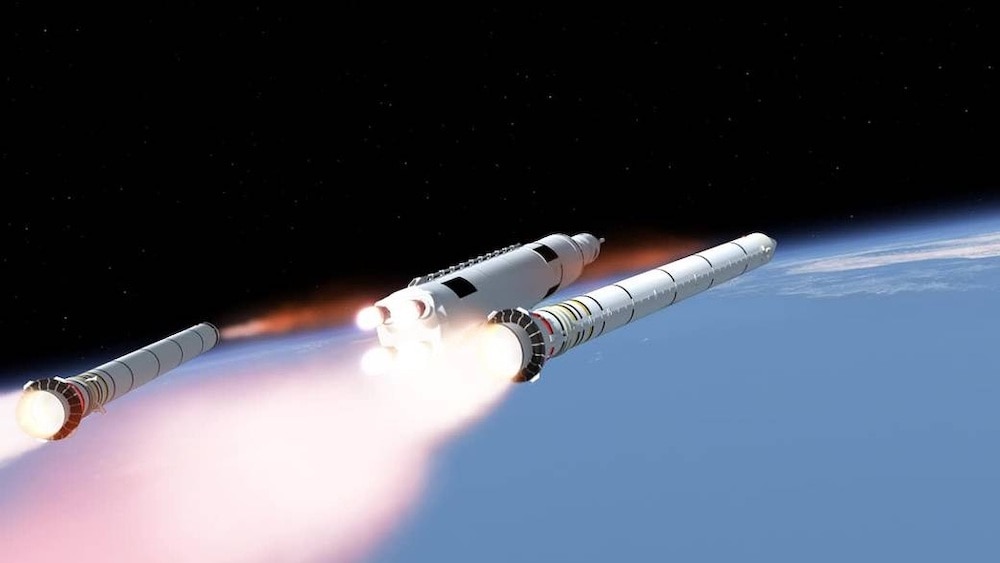Create a free profile to get unlimited access to exclusive videos, sweepstakes, and more!
Odds are way better than you think that space junk could hit a person within a decade
The worst kind of lottery to win.

While there are plenty of challenges to the continued well being of our species, some of which we’ve created ourselves, we have a special fascination with the idea of death from space. The knowledge that a massive asteroid wiped out the dinosaurs and most of the other life on Earth proves that such celestial impacts can happen, and we have imagined what it might be like if it were to happen again in movies like Seeking a Friend for the End of the World and Don’t Look Up.
Luckily, the probability of such an impact is low and we have substantial government programs keeping a vigilant eye on the skies for any potential impactors. The risk of a smaller apocalypse, one which impacts an individual person or group of people, isn’t quite as unlikely. In a new study, Michael Byers from the Department of Political Science at the University of British Columbia, and colleagues, calculated the risk of injury or death from re-entering rocket stages and found that it is more probable than we might like. Their findings were published in the journal Nature Astronomy.
For a long time, and indeed into the current day, the risk of injury or death from a re-entering piece of a spacecraft has been considered incredibly low. Most of the world is covered in water and even the surface of the world is largely unpopulated. In the cosmic game of Russian roulette, it’s unlikely that any one piece of space junk will hit the mark, but each additional piece is another spin of the chamber, and the risk is mounting.
“The risk is certainly growing over time, in part because there are lots of old rocket bodies still up there, many of them launched during the Cold War, and in part because the frequency of launches has recently increased quite dramatically. There are counter-factors that make predictions difficult, including SpaceX's development of first stages that can be landed and re-used many times,” Byers told SYFY WIRE.
The trouble arises largely from rocket stages which are abandoned in orbit. In simple terms, orbits are a function of speed. Maintaining a stable orbit requires maintaining that speed. However, low orbits involve interaction with the atmosphere, which creates drag, slowing rocket stages down and eventually degrading their orbits. On a long enough time scale, they are destined to come back down and a certain percentage of them will get through the atmosphere intact and reach the ground.
The re-entry risk isn’t without precedent. The study notes that in 2016 the second stage of a SpaceX rocket re-entered with two fuel tanks the size of refrigerators reaching the ground. In May of 2020 a core stage of a Long March 5B rocket broke up in the atmosphere and pieces of it, some of them fairly large, struck two villages in the Ivory Coast. A year later, another stage from the same kind of rocket re-entered, but landed in the Indian Ocean. More recently, an abandoned rocket stage impacted the Moon.
“We'd like to see a controlled reentry regime, mandated by a multilateral treaty, that would see all rocket stages brought back to Earth and landed, ideally, or crashed into remote parts of the ocean. There would have to be a transition period, of course, along the model used by the United States and then the International Maritime Organization to move from single-hulled to double-hulled oil tankers,” Byers said.
The generally accepted guideline for an individual launch states that re-entry risk should remain below 1 in 10,000, though that requirement is often waived if meeting it is deemed to difficult or expensive, according to the study. While the risk that any one launch poses is statistically low, all of the abandoned rocket stages in orbit taken together are potentially more dangerous.
Using publicly available data, the team found that over the last 30 years more than 1,500 rocket bodies have re-entered the atmosphere with roughly 70% of those being uncontrolled. The cumulative risk of casualty for those rocket bodies was calculated at 14%, significantly higher than 1 in 10,000.
Risk of injury or death was calculated by taking the orbital path, assuming an equally likely probability that a stage will re-enter at any point on that path and bumping it up against population data along that line. The team also gave preference to rocket bodies with a perigee of lower than 600 kilometers, as those are considered most likely to deorbit in the coming decades. Lastly, they took the trend over the last 30 years, mentioned above, and used that to calculate a 6% to 10% risk of injury or death in the next decade. Without action, these risks are likely to increase as a consequence of both a growing human population, and a growing number of abandoned rocket bodies in orbit. Moreover, that risk could be worsened if an impact occurred at densely populated locales.
“One next step in our research concerns low probability/high consequence events, for instance, a civilian airliner being struck by a piece of a rocket body that's re-entered in an uncontrolled way. Again, we haven't done this research yet, so we don't know what the risk is. But there is certainly some risk present, and most of it could be avoided, in the future, through a controlled reentry regime,” Byers said.
Space exploration is an important part of the human endeavor, and we have, perhaps unintentionally, created a scenario for potential disaster. The best time to have solved this problem was 65 years ago, the second-best time is now.



























